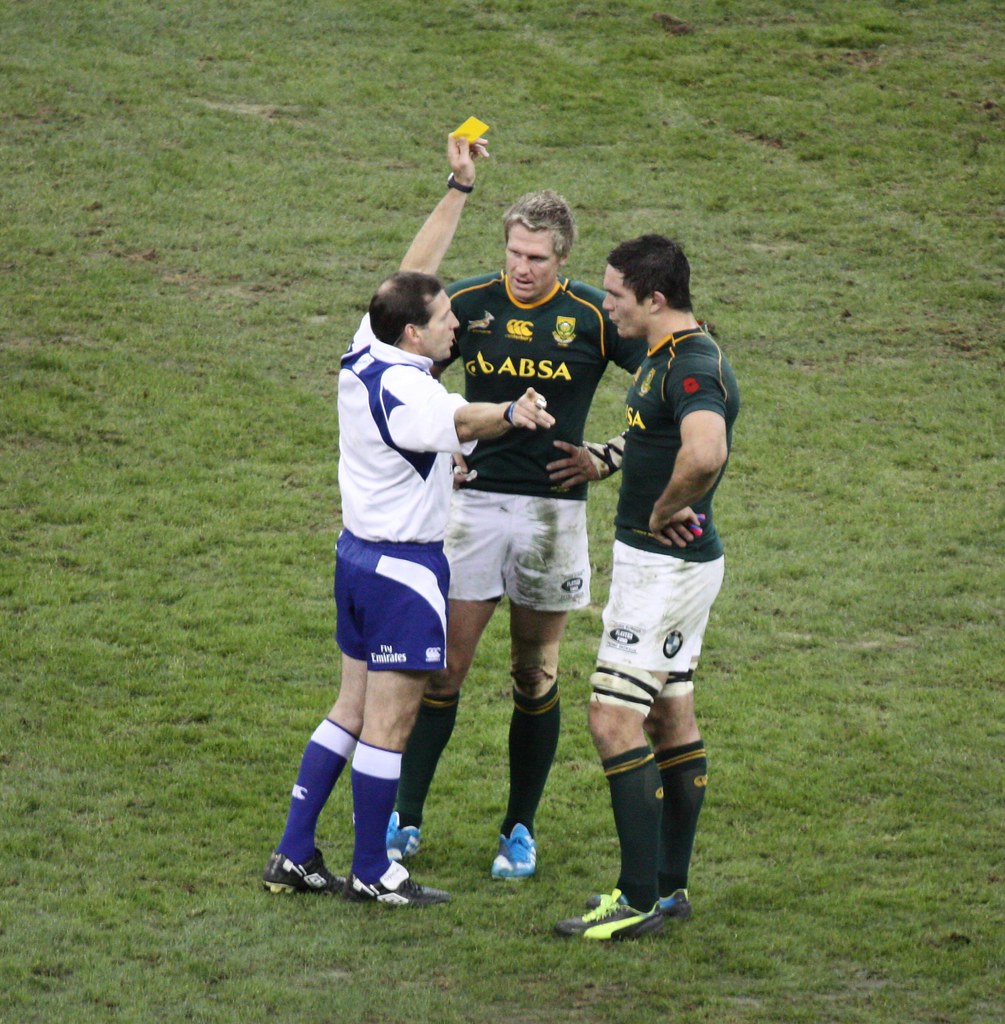
Image: Marc, via Flickr
Ah, match officiating. No matter the decision, there will always be cries of injustice from players, coaching staff and supporters. It is human nature to complain as a form of emotional regulation when decisions go against us. Therefore, there will always be a discussion surrounding those with the power to make these decisions.
Rugby’s Television Match Official (TMO) is widely accepted as a much better functioning system than the likes of football’s Video Assistant Referee (VAR). But, in light of World Rugby’s attempt to clamp down on dangerous tackles and protect player safety, the TMO has had to adapt to new high-tackle laws.
The 2023 Rugby World Cup has seen match officials using the new ‘bunker’ review system to determine whether instances of foul play deserve a yellow or red card. While on-field we have witnessed a showcase of the world’s best rugby with ruthless try-scoring and hard-hitting in abundance, there remains a big discussion off the pitch surrounding the officiating, particularly the TMO bunker.
So, what is the new bunker system?
The bunker provides an additional member to the team of match-day officials. Previously, when foul play has occurred, the referee and TMO review the offence on-field to determine whether the player merits a yellow, red, or no card at all. Now, their job is to decide whether a tackle reaches the yellow card threshold before being sent to the ‘bunker’ for an off-field review. While the player in question spends time in the sin bin, the bunker official has eight minutes to conclude whether the yellow card should be upgraded to a red, which would mean the player does not return to the field after ten minutes.
And is it working?
The new system brings about efficiency.
The idea behind the introduction of the bunker was to speed up the game and avoid on-field delays. From this perspective, yes, it is working. On occasions where the foul play incident could be deemed on the border between yellow and red cards or technical difficulties restrict access to certain crucial angles, we would be subject to lengthy delays before the TMO reached a decision, disrupting the flow of the game. The new system brings about efficiency. The referee and TMO quickly conclude that the yellow card threshold is reached, for instance, direct head contact is made, the player is sent to the sin bin with the card ‘under review’.
The bunker official, located in their own out-of-ground office, now takes over. While the action continues, eight minutes are given for the bunker official to review all the footage, consider mitigation and assess the degree of danger. The informed decision is then relayed to the match referee to take the relevant action. This happens without disrupting the game.
However, as previously mentioned, the refereeing and the bunker system have been big topics of conversation throughout this year’s World Cup. The decision-making has often been a source of controversy with players and coaches left disappointed with the lack of consistency. Most recently, Scotland Head Coach Gregor Townsend expressed his discontent with the bunker review system after it failed to upgrade Tongan winger Afusipa Taumoepeau’s yellow card in Scotland’s 45-17 win over the Pacific nation. He claims that the bunker has “taken the game away from referees”. The trend that we have seen at the World Cup is that referees will not brandish a straight red card and will instead refer the incident to the bunker. Therefore, a decision is not made by the match referee but by someone without a feel for how the game is being played.
A decision is not made by the match referee but by someone without a feel for how the game is being played.
Overall, I have enjoyed the use of the bunker during the Rugby World Cup and believe it will help the game going forward. While inconsistencies are undoubtedly frustrating, it can only be expected given the element of human subjectivity that is applied to each tackle; the laws of the game are not black and white. Rugby’s current high tackle rules are still fairly new. As players, coaches, supporters and referees familiarise with these laws, there is no doubt that the consistency of decisions will improve, and I am confident the bunker will play a significant role in the future of rugby officiating.


